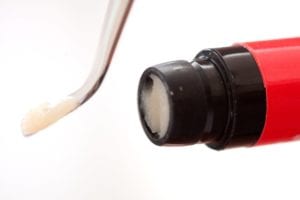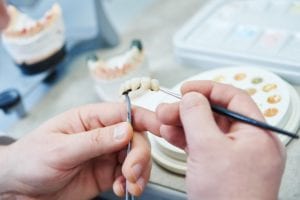Direct vs. Indirect Restorations: What’s the Difference?

Did you know that there are two different types of dental restorations your dentist can use to restore teeth affected by damage or decay? They are known as direct or indirect restorations. Although both types of restorations will restore the look and function of the affected tooth, they will do so in different ways. Ultimately, the type of restoration that is best for you will depend on a number of factors such as the type, extent, and location of the damage or decay.
Direct Restorations
Direct restorations are those that can be entirely fabricated and completed inside the mouth and do not require the use of a dental laboratory. Since they can be completed without the use of a dental laboratory, they can usually be completed during a single dental appointment and don’t require the use of a provisional, or temporary restoration.

The most common direct restoration used are dental fillings made from silver amalgam or composite resin. Like their name suggests, fillings are used to fill dental cavities that have formed as a result of decay. After the decayed tissue is removed and the tooth is prepared, both dental materials can be placed into the cavity, shaped, and hardened in place. By the end of the appointment, the tooth is restored and the patient can return to their usual activities without restrictions.
The composite resin used in dental fillings can also be used to repair minor chips and cracks in the teeth. This type of restorative treatment is known as dental bonding, but it can also be called composite bonding or cosmetic bonding. Like a composite filling, the bonding material can be placed, shaped, and hardened during a single procedure. In some cases, composite resin can also be used for the fabrication of composite veneers.
Indirect Restorations
Indirect restorations are those that cannot be fabricated inside the mouth and instead must be fabricated outside of the mouth before being placed on the affected tooth. Some examples include crowns, bridges, dental implants, inlays, onlays, and veneers. These restorations can be fabricated by a dental laboratory or an in-office milling machine, if your dentist has one. In cases where a dental lab is used, there are usually two dental appointments required to place an indirect restoration.

The first appointment is necessary to prepare the tooth and obtain the necessary fabrication information. The tooth will be prepared by removing any decayed or damaged tissue, and then reshaping the remaining healthy tissue. Depending on the type of indirect restoration being placed, some of the natural tooth structure may also need to be removed to ensure a smooth fit. Once the tooth has been prepared, a dental impression or oral scan will be taken to obtain the information for the dental lab. Since it can take about 1-2 weeks for the permanent restoration to be completed, a temporary restoration will be placed in the meantime. At the second appointment, the permanent restoration will be checked for fit and cemented in place.
Indirect restorations are larger than direct restorations and are capable of restoring teeth that have more severe damage or decay than a small cavity. They are also made from different dental materials that provide additional protection to the tooth and can withstand the force of chewing for longer periods of time before needing replacement. Not only that, but indirect restorations can also provide several aesthetic benefits to improve the look of your smile.
As you can see, direct and indirect restorations both provide different options for restoring damaged or decayed teeth. Direct restorations can be placed during a single appointment to restore areas of minor damage or decay, while indirect restorations can be used to treat more extensive cases. The best way to know which type of restoration is best for you is to have your local dentist examine your teeth and make a recommendation.






Recent Comments